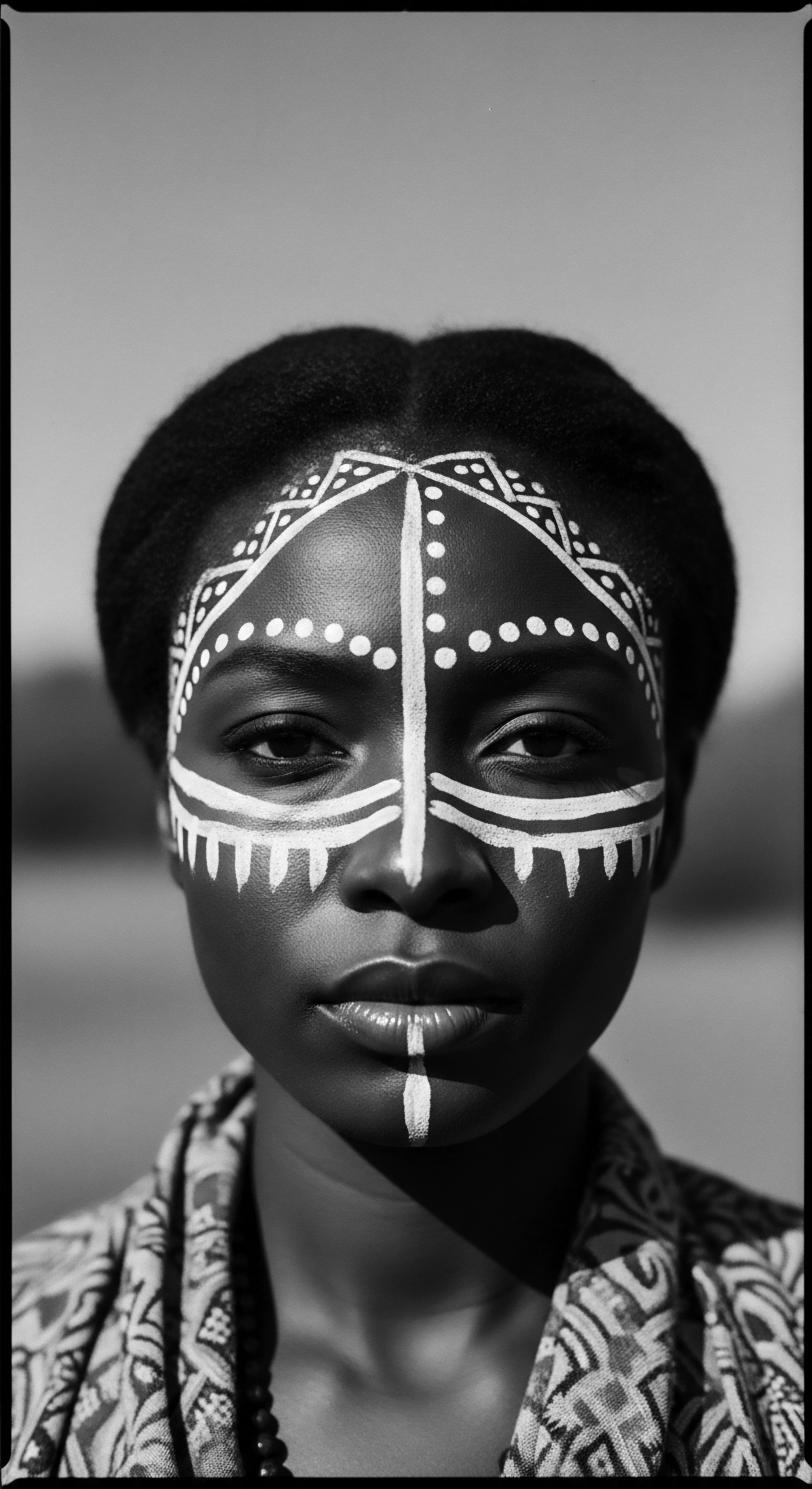
Roots
Consider the deep heritage held within each strand of textured hair, a living testament to journeys spanning continents and generations. This is not merely an aesthetic consideration; it is a profound connection to ancestral wisdom, to the very lineage that shapes who we are. When we speak of hair heritage, especially the rich and complex legacy of textured hair within Black and mixed-race communities, we speak of a history that informs our present sense of self and our place within a collective. It is a story told not only through oral traditions and historical texts, but through the very fibers that spring from our scalps, a silent language understood across the diaspora.
The question of whether understanding hair heritage improves self-perception and community bonds finds its initial whisper in the ancient world. Long before the transatlantic slave trade violently disrupted these narratives, hair in African societies was a meticulous map of identity. Hairstyles communicated age, marital status, wealth, social standing, and even tribal affiliation (Afriklens, 2024; Creative Support, 2022; The Kurl Kitchen, 2024).
A person could read the story of another’s life simply by observing the intricate patterns braided or sculpted into their hair. This ancestral understanding lays the foundation for how we comprehend textured hair today, linking elemental biology to deep cultural meaning.
Each curl and coil carries the echoes of history, a silent yet profound communication of identity and belonging.
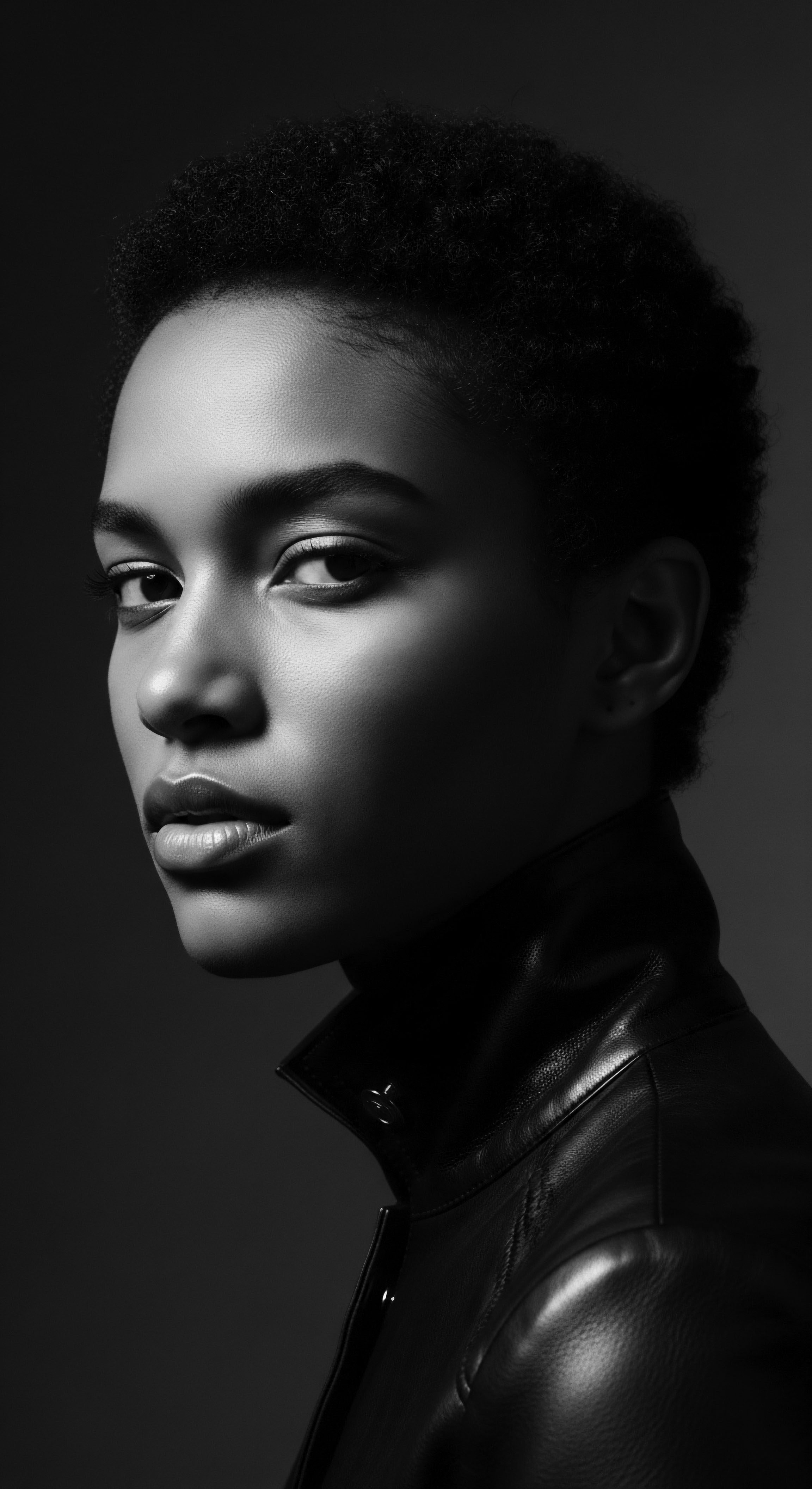
Hair Anatomy and the Echoes of Ancestry
At its core, textured hair possesses a unique biological architecture. Its elliptical follicle shape, combined with a high degree of curl, creates the characteristic coils, kinks, and waves. This structural difference, a biological adaptation to the hot, sun-drenched climates of Africa, provided insulation, shielded the scalp from harsh ultraviolet radiation, and retained moisture in arid environments (Noma Sana, 2024; EBSCO Research Starters, 2024). This scientific understanding offers a modern validation of what our ancestors implicitly knew ❉ their hair was perfectly suited to their environment, a natural crown.
The journey into understanding textured hair’s science is incomplete without acknowledging the historical lens through which it was often viewed. Eurocentric beauty standards, enforced through centuries of colonialism and enslavement, frequently devalued textured hair, deeming it “unprofessional” or “unruly” (Creative Support, 2022; Noma Sana, 2024). This historical devaluation led to psychological struggles and immense pressure to conform, often through chemical or thermal straightening (Walden University Research, 2019; Psychology Today, 2023). Unearthing the scientific reasons for its unique properties helps to dismantle these harmful narratives, allowing for a re-framing of textured hair as biologically intelligent and beautiful.

How Does Follicle Shape Affect Hair Health?
The shape of the hair follicle plays a significant part in the overall health and appearance of textured hair. A round follicle produces straight hair, while an oval or elliptical follicle yields curly or coily strands. This elliptical shape means the hair shaft itself is also elliptical, rather than perfectly round. The uneven growth from an elliptical follicle creates points of tension along the hair strand, leading to its characteristic curl.
These natural curves, while stunning, also present specific care considerations. The bends in the hair strand make it more prone to dryness because natural oils from the scalp struggle to travel down the shaft, leaving the ends particularly vulnerable. This biological reality underscores the importance of moisture retention in traditional and contemporary textured hair care practices.
Understanding this inherent biology is not merely academic. It empowers individuals to choose care regimens that align with their hair’s natural needs, rather than fighting against them. When one understands the science behind the thirst of a coil or the elasticity of a kink, the journey to healthy hair becomes a partnership with nature, a respectful dialogue with one’s own inherited traits.

The Lexicon of Textured Hair ❉ Names and Meanings
The language used to describe textured hair has evolved, reflecting both its scientific properties and societal perceptions. While modern classification systems (like types 3a-c and 4a-c) offer a standardized way to categorize curl patterns, they often fail to capture the profound cultural significance deeply woven into traditional African hair nomenclature.
| Historical Context/Cultural Term Ancestral Designations ❉ Terms used in pre-colonial African societies to denote social status, tribal affiliation, age, or spiritual connection. These were often highly specific to a community. |
| Modern Scientific Description/Associated Term Hair Typing Systems ❉ Numerical and alphabetical classifications (e.g. 4C, 3B) primarily based on curl pattern, diameter, and density. These are widely used in contemporary hair care to categorize textures. |
| Historical Context/Cultural Term "Good Hair" / "Bad Hair" ❉ Post-slavery terms reflecting Eurocentric beauty standards, associating straight or loose curls with "goodness" and tighter textures with "badness." |
| Modern Scientific Description/Associated Term Hair Discrimination Studies ❉ Research into implicit bias against textured hair and its impact on self-perception and professional opportunities (Perception Institute, 2016). |
| Historical Context/Cultural Term Dukus / Doek ❉ Traditional terms for headwraps in Ghana and Namibia, signifying wealth, ethnicity, or marital status (Byrdie, 2022; Helix Hair Labs, 2023). |
| Modern Scientific Description/Associated Term Protective Styling Accessories ❉ Modern bonnets, scarves, and wraps utilized for moisture retention and friction reduction overnight, recognizing the protective qualities of head coverings. |
| Historical Context/Cultural Term The language we use to describe textured hair carries the weight of history, reflecting both its inherent properties and societal influences. |
The imposition of terms like “good hair” and “bad hair” during and after slavery served to internalize racist beauty ideals, creating a caste system where straighter textures were privileged (Creative Support, 2022; Noma Sana, 2024). This historical linguistic burden speaks volumes about the systematic attempts to erase identity. Reclaiming ancestral terms, or simply choosing language that celebrates the inherent beauty of all textured hair, becomes an act of self-affirmation and a rejection of imposed narratives.
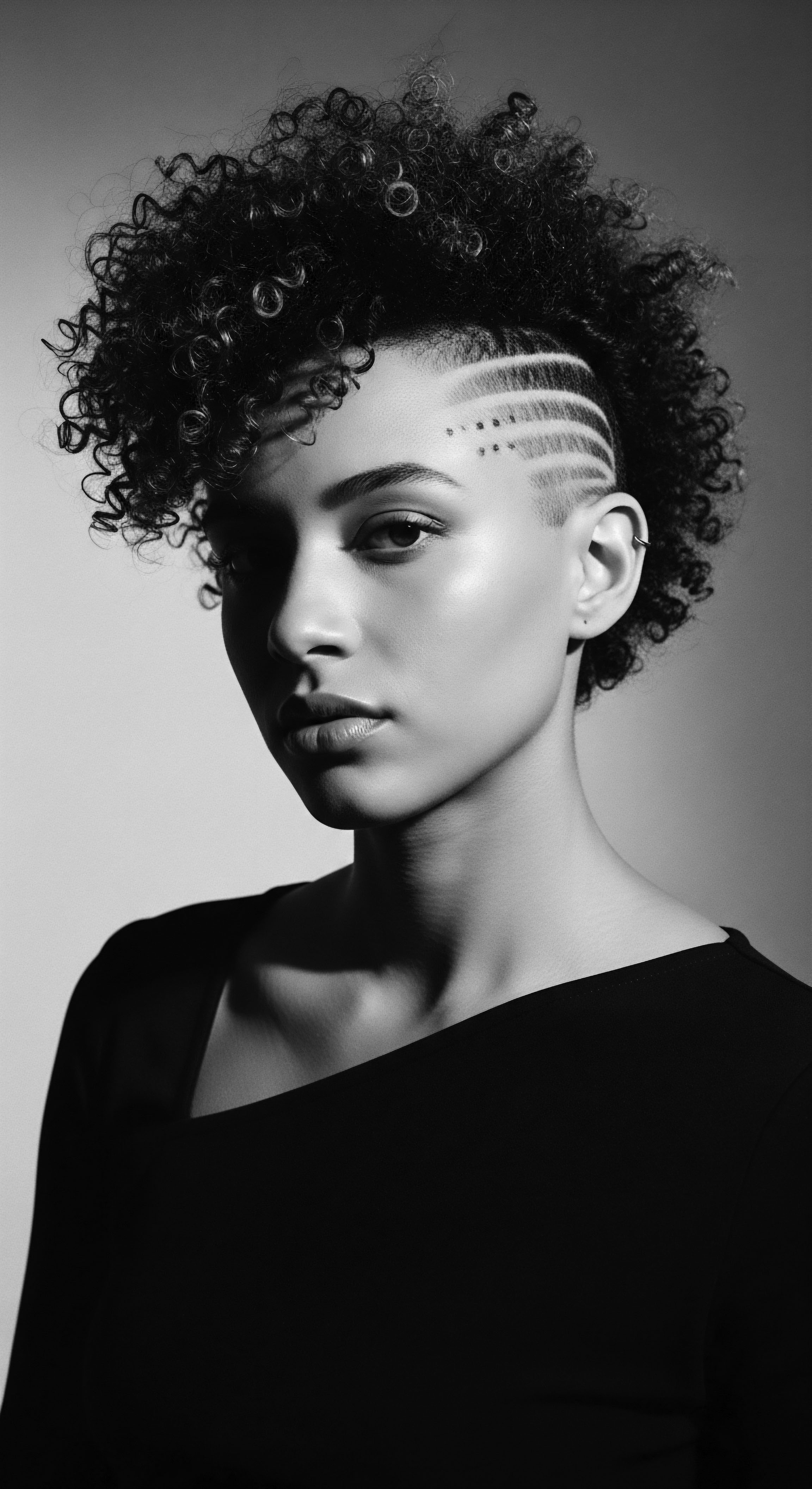
How Do Hair Growth Cycles Relate to Ancestral Care?
Hair growth follows distinct cycles ❉ anagen (growth), catagen (transition), and telogen (rest/shedding). While these biological processes are universal, ancestral practices often integrated this understanding intuitively. Traditional African hair care, passed down through generations, often focused on nurturing the hair and scalp through extended protective styles like braids and twists, along with regular oiling and cleansing rituals (Creative Support, 2022; University of Salford Students’ Union, 2024). These methods naturally supported the anagen phase by minimizing manipulation and breakage, allowing strands to remain on the head longer.
Consider the practice of communal hair grooming in many African societies. This was not just a chore; it was a deeply social event that strengthened communal bonds (Africa Imports, 2024; EBSCO Research Starters, 2024; The Kurl Kitchen, 2024). The time spent braiding, oiling, and detangling became opportunities for storytelling, for transmitting wisdom, and for reinforcing family and community ties.
This communal act of care, implicitly supporting hair health through gentle handling and consistent attention, offers a tangible link between biological processes and collective well-being. The knowledge of what to use, when to cleanse, and how to protect hair was embedded in ancestral wisdom, a living science transmitted through shared experience.

Ritual
The hands that once adorned, prepared, and protected textured hair across generations bequeathed a rich inheritance of ritual, transforming daily care into acts of cultural reverence. These practices, far from mundane, represent a continuous thread connecting past ingenuity with present-day self-expression. The very styling of textured hair, whether through protective styles or traditional adornments, has historically been a powerful medium for communication, resistance, and the assertion of identity. Understanding these profound connections helps to solidify self-perception and reinforce the bonds that hold communities together.
From the intricate artistry of ancient African braiding techniques to the deliberate choices made by contemporary individuals, hair styling has always been an active dialogue with one’s heritage. In West African societies, the specific patterns of braids could convey a person’s social status, marital status, or even their ethnicity (Creative Support, 2022; Afriklens, 2024; The Kurl Kitchen, 2024). This visual language spoke volumes without uttering a single word, establishing community cohesion through shared aesthetic codes. Even during the devastating era of the transatlantic slave trade, enslaved African women braided rice seeds and maps into their hair as a means of survival and resistance, turning hair into a clandestine tool for liberation (BLAM UK CIC, 2022; Creative Support, 2022; Odele Beauty, 2024).
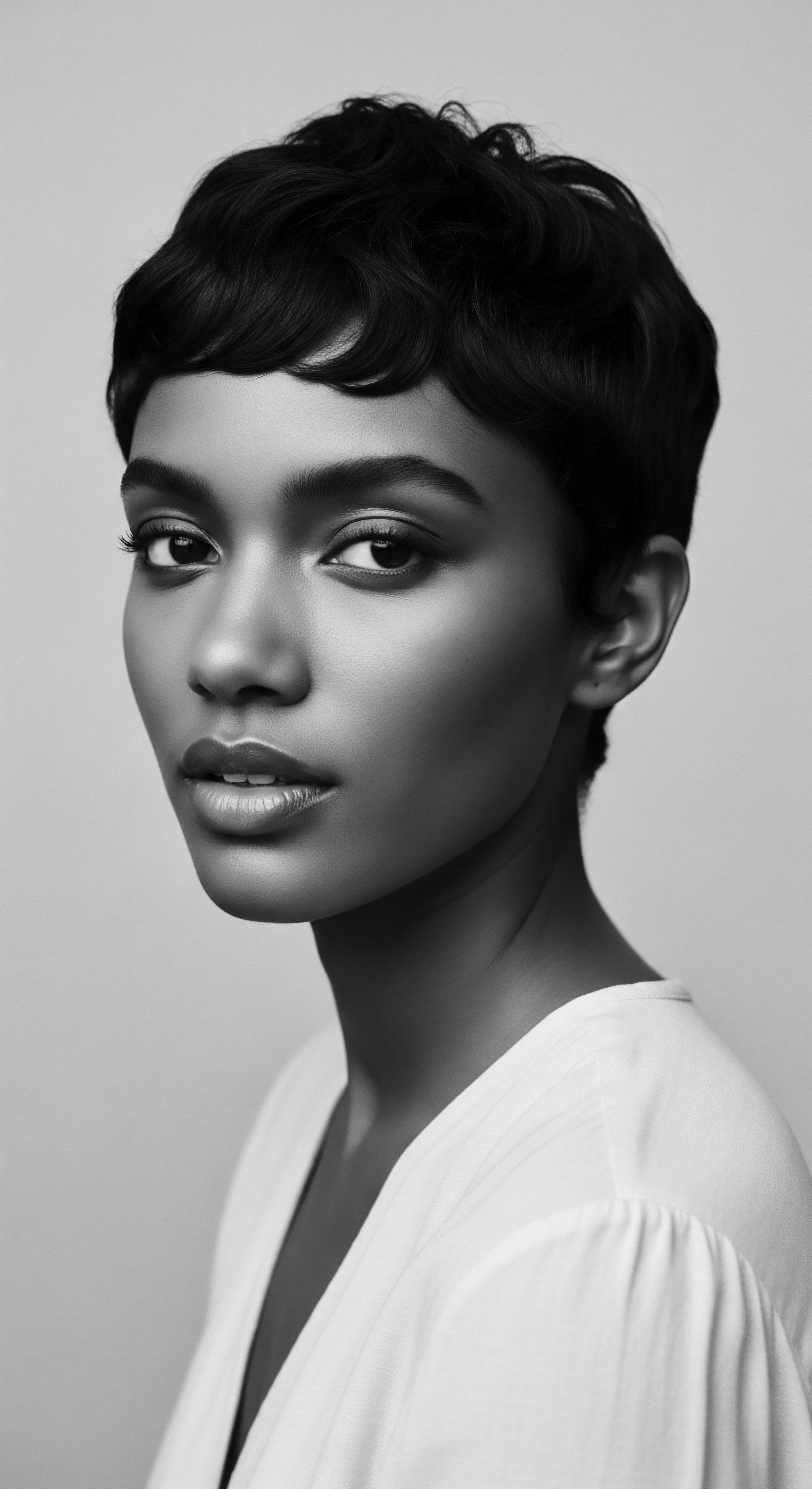
Protective Styling ❉ Ancient Roots, Modern Relevance
Protective styles, such as braids, twists, and cornrows, are not merely fashion trends; they are practices deeply rooted in African antiquity, designed to safeguard delicate strands from environmental stressors and minimize manipulation (Creative Support, 2022; University of Salford Students’ Union, 2024). The wisdom embedded in these styles allowed hair to grow, retain moisture, and remain healthy in diverse climates and demanding conditions.
- Cornrows ❉ Tracing their origins back to 3500 BCE in Africa, cornrows were (and remain) a foundational braiding technique where hair is braided close to the scalp in rows. Beyond aesthetics, they were often used to signify tribal identity, social status, or even to map escape routes during slavery (Odele Beauty, 2024; BLAM UK CIC, 2022).
- Bantu Knots ❉ This style, where sections of hair are twisted and wrapped around themselves to form knot-like shapes, is believed to have originated with the Zulu people and other Bantu-speaking groups in Southern Africa (Afrocenchix, 2024; The Kurl Kitchen, 2024). They served as a protective measure and could be unraveled for a wavy texture.
- Locs (Dreadlocks) ❉ While present in various cultures globally, locks hold particular spiritual and cultural weight in some African communities, symbolizing higher power for priests in Akan culture and strength for warriors in others (Creative Support, 2022; Afrocenchix, 2024). In the United States, they became a symbol of connection to Africa and rejection of mainstream norms in the 1970s (Creative Support, 2022).
The continued practice of these styles today signifies a reclamation of cultural practices and a profound connection to ancestry. When one chooses to wear braids or locs, they are not simply adopting a style; they are honoring a legacy of resilience, carrying forward a visual history that speaks of identity and resistance.
Styling textured hair is a living archive, a way to converse with the hands that shaped our heritage.

What is the Significance of Traditional Tools?
The tools used in traditional textured hair care were often crafted from natural materials and designed with an intimate understanding of the hair’s unique properties. Combs and picks, fashioned from wood, bone, or metal, were essential for detangling and shaping (University of Salford Students’ Union, 2024). These were not mass-produced implements; they were often handcrafted, embodying a personalized approach to care. The very act of creating these tools, and then using them in communal settings, reinforced the shared knowledge and the collective value placed on hair.
Contrast this with the tools that gained prominence during periods of forced assimilation. The hot comb, popularized by Madam C.J. Walker in the early 1900s, offered a way to temporarily straighten textured hair, allowing Black women to conform to Eurocentric beauty standards for social and professional acceptance (Noma Sana, 2024; Folklife Magazine, 2022).
While offering a wider range of styles, the hot comb and later chemical relaxers also represented a departure from ancestral practices, sometimes at the expense of hair health and cultural authenticity (Noma Sana, 2024). The decision to use, or not use, these tools has become a deeply personal and political one, reflecting an ongoing dialogue with beauty standards and heritage.
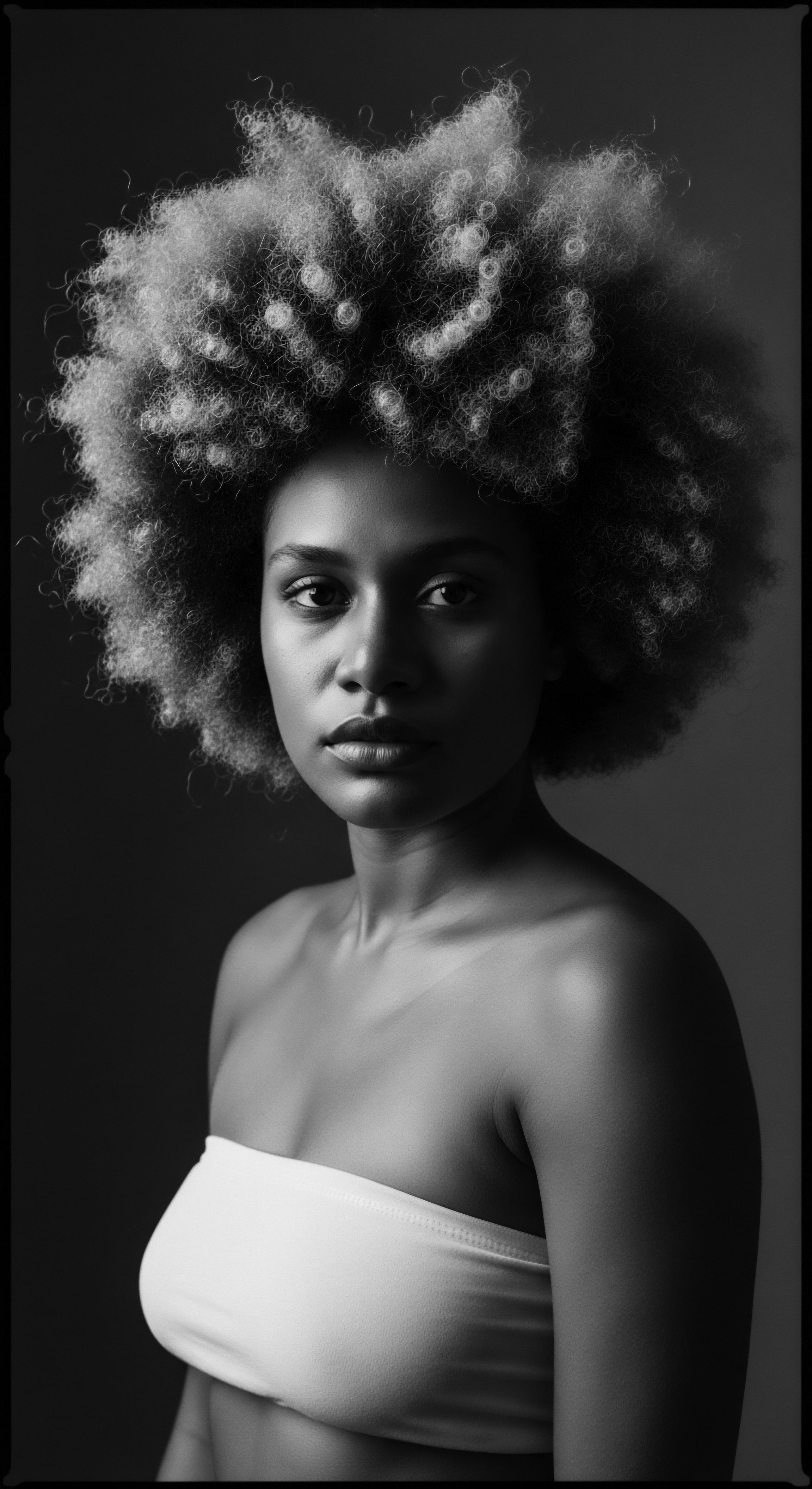
How Can Understanding Hair History Inform Modern Care?
Understanding the historical context of hair styling tools and techniques offers a nuanced perspective for modern care. It invites a conscious choice to either selectively integrate innovations that align with hair health, or to prioritize traditional methods that honor ancestral wisdom. For example, the use of wide-tooth combs, designed to navigate curls without breakage, echoes the function of traditional African combs crafted for similar purposes. Recognizing this continuity allows for a more informed and respectful approach to hair care, where science and tradition meet.
The return to natural hair, a powerful movement that gained momentum in the 1960s with the “Black is Beautiful” ethos and saw a resurgence in the 2000s, emphasizes embracing natural textures without chemical alteration (Creative Support, 2022; The Temple News, 2018). This movement is not just about hair; it represents a significant shift in self-perception and a strengthening of community bonds. Research indicates that Black women who wear their hair in a natural state often experience increased self-esteem (EliScholar, 2023; Cal State Open Journals, 2009; PubMed, 2020). This correlation suggests that reclaiming one’s hair heritage directly impacts individual well-being, affirming identity in defiance of historical pressures.

Relay
The transmission of ancestral wisdom through textured hair care practices forms a powerful relay, connecting generations in a continuous stream of knowledge, self-worth, and communal solidarity. This profound exchange transcends mere routines; it shapes a holistic understanding of well-being, grounded in a lineage that views hair as a sacred extension of self and community. The enduring wisdom of traditional care, now often validated by contemporary science, reinforces how deeply understanding hair heritage can improve self-perception and fortify the bonds within communities.
In many indigenous African societies, hair was considered a conduit to the divine, a medium for spiritual energy connecting individuals to their ancestors (Afriklens, 2024; ResearchGate, 2003). The intricate acts of cleansing, oiling, braiding, and adorning were not merely cosmetic but spiritual rites, performed with reverence and intention. This deep spiritual connection, passed down through oral traditions and communal grooming, instilled a collective respect for hair that informed self-perception and solidified group identity. Even today, the echoes of these ancestral practices resonate within modern Black and mixed-race communities, where hair care gatherings often double as spaces for shared stories, support, and cultural affirmation.
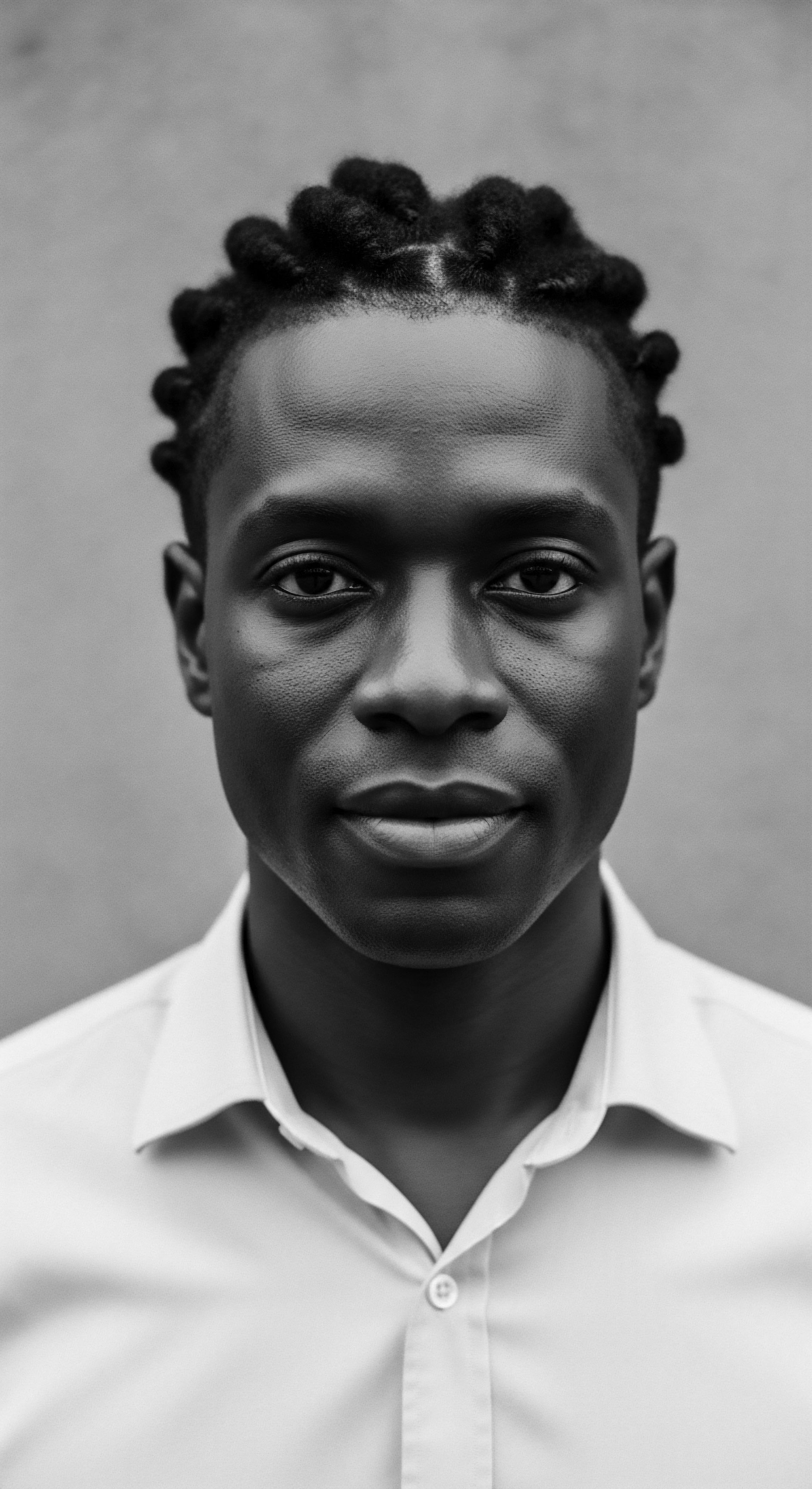
Holistic Care ❉ An Ancestral Prescription
The concept of holistic hair care, encompassing physical, mental, and spiritual well-being, is not a modern invention; it is deeply rooted in ancestral philosophies. Traditional African hair care practices often involved natural ingredients sourced from the earth, chosen for their nourishing properties and often imbued with cultural significance. These ingredients provided moisture, promoted growth, and protected the hair, aligning with a broader wellness philosophy that viewed the body, spirit, and environment as interconnected.
Consider the pervasive use of certain botanical ingredients in traditional African hair care. Shea Butter, derived from the nuts of the shea tree, has been revered for centuries across West Africa for its emollient properties, providing deep moisture and protection (Africa Imports, 2024; Formula Botanica, 2024). Marula Oil, extracted from the kernels of the marula fruit in Southern Africa, is rich in antioxidants and essential fatty acids, historically valued for its hydrating and healing qualities for both skin and hair (Africa Imports, 2024; Formula Botanica, 2024). These are not simply products; they are botanical inheritances, each carrying the wisdom of generations who understood their local flora intimately.
The practice of using these ingredients reflects an understanding that healthy hair stems from a nourished scalp and a well-cared-for body. This ancient knowledge now finds resonance in contemporary scientific understanding of barrier function and nutrient absorption.

Nighttime Rituals ❉ The Bonnet’s Legacy
One of the most enduring and culturally significant rituals in textured hair care is the nighttime protection of strands, often through the use of bonnets, scarves, or wraps. While sleep caps were used by European women in the mid-1800s to keep warm, headwraps themselves hold ancient origins in African regions like Ghana and Namibia, where their styling reflected wealth, ethnicity, and marital status (Byrdie, 2022; Helix Hair Labs, 2023). However, during the era of enslavement in the Americas, head coverings took on a grim significance. They were weaponized, mandated to visibly distinguish Black women as subordinate, attempting to strip away their identity and cultural pride (Byrdie, 2022; Team True Beauty, 2023; Helix Hair Labs, 2023).
Yet, in an profound act of resistance and reclamation, Black women transformed the bonnet. It became a powerful symbol of defiance, a means to assert identity, preserve cultural heritage, and protect their hair from damage and breakage due to harsh conditions and lack of resources (Hype Hair, 2023; Team True Beauty, 2023). Today, the bonnet is a practical tool for moisture retention and frizz prevention, but it also carries the weight of this complex history, standing as a testament to resilience and the enduring spirit of self-care against systemic oppression.
The act of preserving hair at night, though simple, carries the weight of centuries of resistance and reclamation.
A compelling illustration of how hair heritage influences self-perception can be observed in the findings of the Perception Institute’s “Good Hair” Study in 2016. This research revealed that, on average, white women showed explicit bias toward Black women’s textured hair, rating it as less beautiful, less attractive, and less professional than smooth hair (Perception Institute, 2016). Simultaneously, the study found that Black women in the natural hair community had significantly more positive attitudes toward textured hair than other women, including Black women outside this community. Millennial naturalistas, specifically, showed the most positive attitudes.
This data powerfully underscores that embracing natural hair, a direct connection to heritage, correlates with a more positive self-perception, and it also highlights the external biases still present in society. This ongoing challenge makes the deliberate act of celebrating hair heritage a vital component of self-affirmation and community building. (Perception Institute, 2016).

Community Bonds Through Shared Hair Journeys
The shared experience of navigating societal perceptions of textured hair, particularly against Eurocentric beauty standards, has long served as a powerful force in forging community bonds. For generations, hair care was a communal activity, a time for women and girls to gather, share techniques, wisdom, and stories (University of Michigan, 2024; Folklife Magazine, 2022). This collective grooming fostered deep connections, creating spaces of mutual support and understanding.
Even in contemporary times, this communal spirit endures. The natural hair movement, which gained widespread popularity in the early 2000s, has been driven by online communities, meetups, and shared resources, allowing individuals to connect over their hair journeys and reject pressures to conform (Walden University Research, 2019; The Temple News, 2018). This collective embrace of natural texture has fortified a sense of shared identity and belonging.
- Shared Expertise and Skill Transmission ❉ From braiding circles to modern online tutorials, the passing down of styling techniques and product knowledge strengthens intergenerational ties and practical community skills.
- Collective Affirmation ❉ When individuals within a community openly celebrate and support each other’s textured hair, it creates a powerful environment of self-acceptance, pushing back against external negativity (EliScholar, 2023).
- Historical Resilience ❉ Recognizing hair as a symbol of resistance throughout history, from cornrows hiding escape routes to Afros symbolizing Black Power, binds individuals in a shared narrative of strength and survival (BLAM UK CIC, 2022; Creative Support, 2022).
The deliberate choice to wear textured hair in its natural state is not merely personal; it is a profound cultural statement. It signifies a refusal to acquiesce to historical pressures, a conscious alignment with ancestral heritage, and a powerful assertion of self-worth within a community that has historically fought for the right to define its own beauty. This defiance, expressed through hair, reinforces both individual self-perception and the collective bonds of shared identity.

Reflection
The journey through textured hair heritage, from its elemental biology to its profound role in shaping self-perception and community bonds, truly affirms the ‘Soul of a Strand’ ethos. Each curl and coil, each wave and kink, is not merely a physical attribute; it serves as a living, breathing archive, holding centuries of resilience, creativity, and identity. When we choose to understand this rich legacy, we are doing more than learning about hair; we are connecting with a deep stream of ancestral wisdom, embracing a part of ourselves that has been a symbol of both oppression and triumphant reclamation.
This connection is a wellspring for individual self-worth. To recognize the inherent beauty and historical significance of one’s textured hair is to affirm a profound truth about one’s lineage and one’s place in the world. It is a liberation from imposed standards, an acceptance of an inherited crown. This personal revelation, when shared, multiplies its impact, forging powerful community bonds.
The shared acts of caring, styling, and celebrating textured hair become rituals that reinforce collective identity, passing down not just techniques, but stories, values, and an enduring sense of belonging. The strands that adorn our heads are threads of history, linking us to those who came before and those who will follow. They are whispers of yesterday, anchors for today, and beacons for tomorrow, continually shaping our narratives of self and solidarity.

References
- Afriklens. (2024, November 1). African Hairstyles ❉ Cultural Significance and Legacy.
- Afrocenchix. (2024, October 2). A Short Interesting History Of Hair Braiding.
- Annie International, Inc. (2023, December 21). The Origin Story Of The Bonnet.
- BLAM UK CIC. (2022, September 15). The history of Black Hair.
- Byrdie. (2022, September 27). The Significance and History of Bonnets.
- Cal State Open Journals. (2009). The Hair Issue ❉ Political Attitude and Self-Esteem as Determinants of Hairstyle Choices Among African American Women.
- Chosen Care. (2024, February 28). Celebrating Black Hair ❉ Empowering Beauty and Resilience.
- Creative Support. (2022, September 15). The History of Black Hair.
- EBSCO Research Starters. (2024). Afro-textured hair.
- EliScholar. (2023, May 12). The Development Of A Self-Esteem Toolkit For Black Adolescent Girls Centering Hair As A.
- Folklife Magazine. (2022, November 7). It’s More Than “Just” Hair ❉ Revitalization of Black Identity.
- Formula Botanica. (2024, February 27). 10 Natural African Skincare Ingredients.
- Helix Hair Labs. (2023, March 3). The Origin Story Of The Bonnet.
- Hype Hair. (2023, June 26). Unveiling the History of the Hair Bonnet for Black Women.
- Noma Sana. (2024, October 30). The History of Straightening Afro Hair ❉ Culture, Trends & Identity.
- Odele Beauty. (2024, January 16). A History Lesson On Hair Braiding.
- Perception Institute. (2016). The “Good Hair” Study Results.
- Psychology Today. (2023, December 12). The Politics of Black Hair.
- PubMed. (2020, November 17). Natural Hair ❉ a Vital Component to Black Women’s Health.
- ResearchGate. (2003). Hair in African Art and Culture.
- Team True Beauty. (2023, December 7). The Significance and History of Black People Bonnets.
- The Kurl Kitchen. (2024, November 5). The Cultural Significance Of Natural Hair In Different Communities.
- The Temple News. (2018, October 30). Natural hair movement encourages self-love.
- University of Michigan. (2024). Black Women and Identity ❉ What’s Hair Got to Do With It?
- University of Salford Students’ Union. (2024, October 29). The Remarkable History Behind Black Hairstyles.
- Walden University Research. (2019, January). African American Women’s Perceptions of Self-Value in the Transition to Natural Hair.
